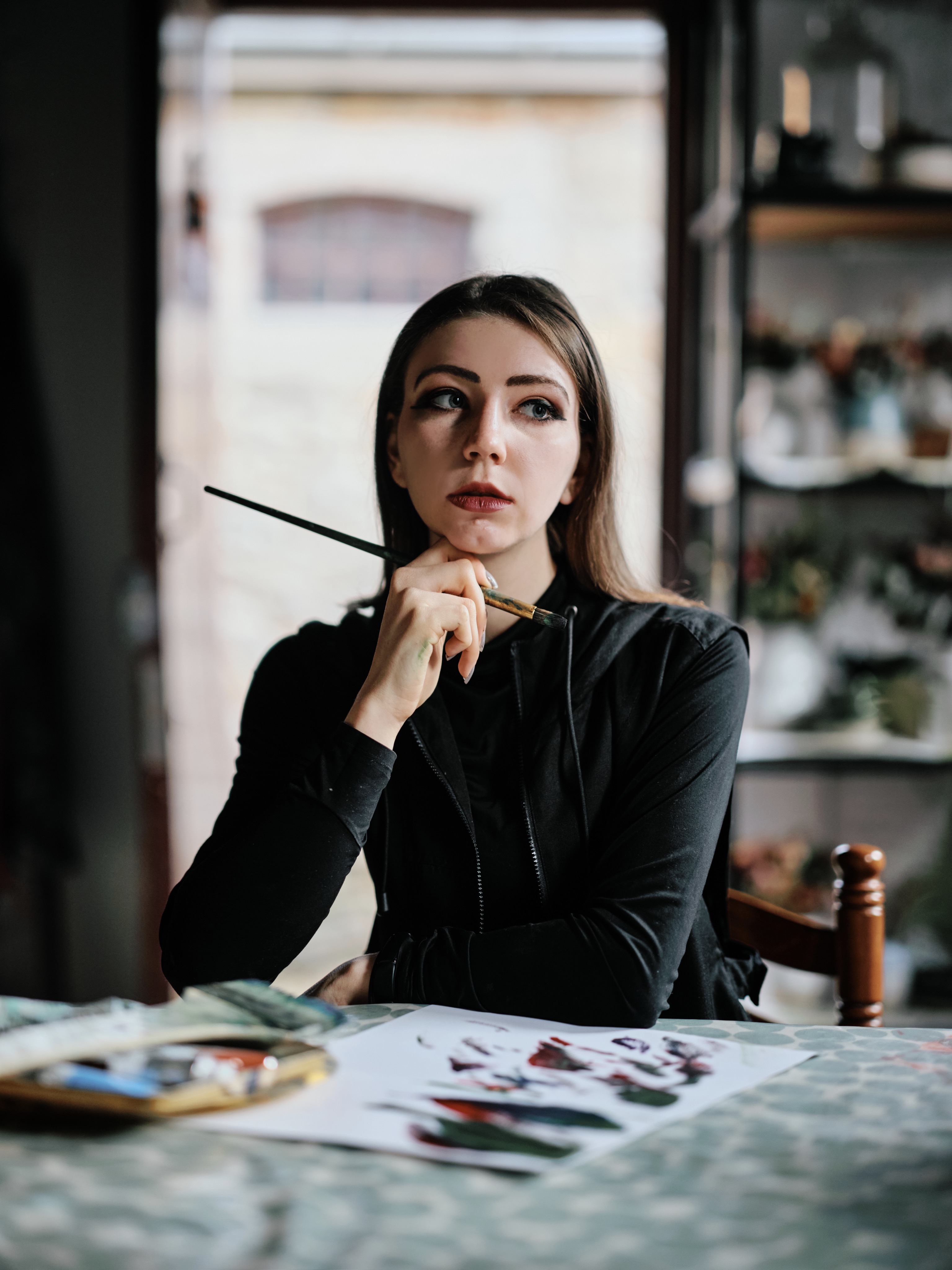process
‘My Eating Disorder consumed me and left me crying alone in my bedroom for the 12th time this week. At that moment, I realised I was all alone...and that in the end, all that was left was me and the disease’
(Zlatar,Artist Journal, 2022 p. 43).
While a practice-led methodology (Sullivan, 2019) is the overarching methodology for my doctoral study, Iinclude an autoethnographic approach (McIlveen, 2008) within my study to provide insights into personal narratives of someone who is experiencing Eating Disorder. My artworks consist of acrylic paintings that represent a series of conceptually and psychologically charged self-portraits as well as include allegorical imagery and ‘memoryscapes.’ Memoryscapes are explained by Toby Butler (2009) as being visual pieces based on memories, events and experiences that often recreate those moments with a specific conceptual message. This representational form of artmaking is pivotal within my work as it enables an authentic and personal interpretation of Eating Disorders, that counteracts the conventional and stereotypical social-media representations of Eating Disorders (Spettigue, 2004).

Drawing on my own Eating Disorder experience through personal stories, texts and images as autoethnographic research data, I aim to foreground the sensitive nature of the subject matter by providing a personalised visual account of the Eating Disorder experience (Ellis et al., 2011)
My practice-led methodology has a key emphasis on the subject matter and scale. I often paint very small (4x6") as the subject matter is very intimate to me, and signify the delicate nature and sensitivity of the works themselves. . Having people come close to examine the paintings, is part of the experience of getting a glimpse into my life myself. In some of the artworks, the scenes may appear commonplace to viewers such as a mall or doctor’s office. However, through the eyes of an individual who has experienced life with an Eating Disorder, they may become sinister, threatening, and overwhelming.

My visual works consist of painting acrylic self-portraits, and these are informed by Josephine Brian’s (2006) notions of how within the process of self-identity formation, the body becomes a source of control as well as a form that can be manipulated. Furthermore, it is important to understand the process through the way I choose to (re)present myself to the world (Brian, 2006). I want to be as vulnerable as possible, and share the horror of the illness and the depth of the disease that is exemplified in my personal story. Like myself and many others with Eating Disorders, we undergo immense psychological distress, whereby the body becomes the symbolic and tangible physical output of the internal struggle.
studio images

Ally Zlatar // allyzlatar@gmail.com // @allyzlatar
All rights reserved. Images may not be used without permission of the artist ©2023.
The images on this site may not be reproduced or downloaded.
All rights reserved. Images may not be used without permission of the artist ©2023.
The images on this site may not be reproduced or downloaded.
